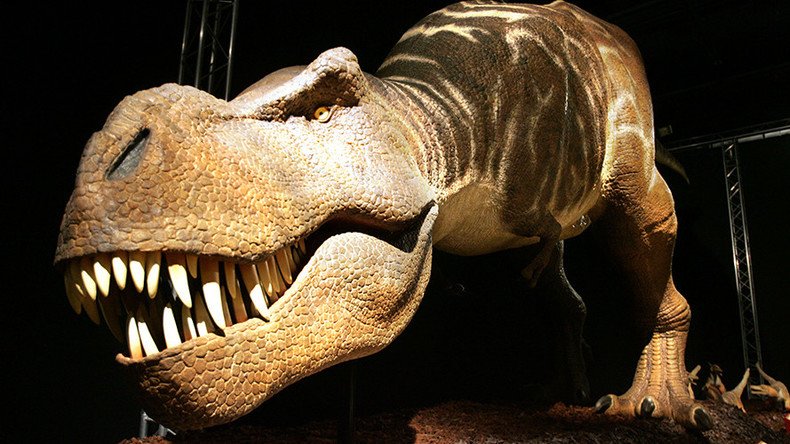First dinosaurs walked the earth 10 million years earlier than believed – study

The first dinosaurs might have evolved even earlier than we thought: Paleontologists now think that the transition from pre-dinosaurs to true dinosaurs happened 10 million years prior to the assumed date.
The breakthrough lies in the Chanares, a rock formation in Argentina that contains fossils of dinosaur ancestors. Researchers analyzed two of its rocks and now say that their conclusion is quite precise: Chanares fossils are about five million to 10 million years younger than previously thought.
Chanares is located beneath the Ischigualasto formation, which has preserved remains of dinosaurs to the age of around 230 million years old.
“If you’re looking to understand the origin of dinosaurs, this is the place to go,” said team member Randall Irmis, a paleontologist at the Natural History Museum of Utah in Salt Lake City, to Nature.
Scientists hoped that if they determine precisely the age of the Chanares rocks, it would give than an answer as to when the dinosaur ancestors preserved in the Ischigualasto formation transformed to dinosaurs.
‘Blood vessels’ retrieved from 80mn-yo dinosaur fossil – study
https://t.co/wYbkFJPSAvpic.twitter.com/1THVRE9ja9
— RT (@RT_com) December 4, 2015Claudia Marsicano, a paleontologist at the University of Buenos Aires, and her team analyzed zircon crystals within the rock. When they form, they trap uranium within them. Then, the uranium decays into lead.
After looking at about 20 such zircon crystals, researchers concluded that the rock formation dates back to between 236 million and 234 million years ago. Until now, paleontologists had thought the Chañares fossils were between 247 million to 237 million years old.
“Using precise radioisotopic ages, we demonstrate that the temporal gap between assemblages containing only dinosaur precursors and those with the first dinosaurs ... [were] 5–10 million years shorter than previously thought,” researchers wrote.
‘Ferrari of competitors': 66mln-yo super-fast giant raptor unearthed in S. Dakota https://t.co/XwcgNIIJdWpic.twitter.com/THfUxfEmis
— RT (@RT_com) November 7, 2015The new work suggests that the first dinosaurs spread quickly and effectively into the ecosystems in which their ancestors lived, Nature journal reports.
“They appear and they start to diversify quite rapidly,” Claudia Marsicano, a paleontologist at the University of Buenos Aires who led the research team, said. “They evolved quite successfully.”
What that also means is that the new study contradicts earlier theory that dinosaurs did not appear until environments changed and there was a new ecosystem for them.
Giant footprints lead scientists to Scotland’s biggest dinosaur site https://t.co/korMCHvuNBpic.twitter.com/ZjkQnRQof1
— RT UK (@RTUKnews) December 2, 2015True dinosaurs and their predecessors – called dinosauromorphs – had very much in common, except for a few physical differences.
For example, dinosaurs’ skulls developed an extra hole to better cool off after intensive activity. They also had stronger leg muscles and could run faster due to a ball-and-socket hip that could rotate easily, and had additional sacral vertebra at the end of the spine.
"You don't seem to see dinosaurs showing up and immediately taking over," study co-researcher Irmis said. "It really emphasizes that there wasn't much special about the first dinosaurs. They were pretty similar to their early dinosauromorph relatives and probably doing very similar things."












